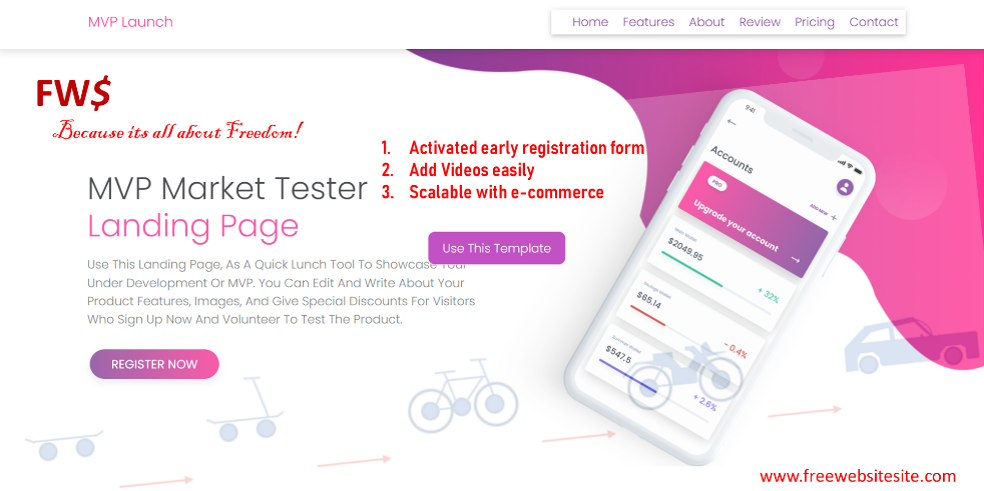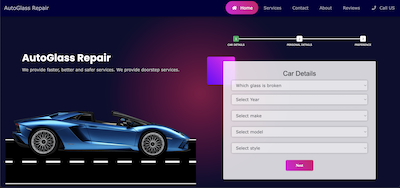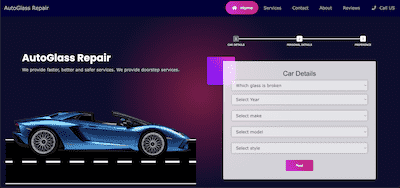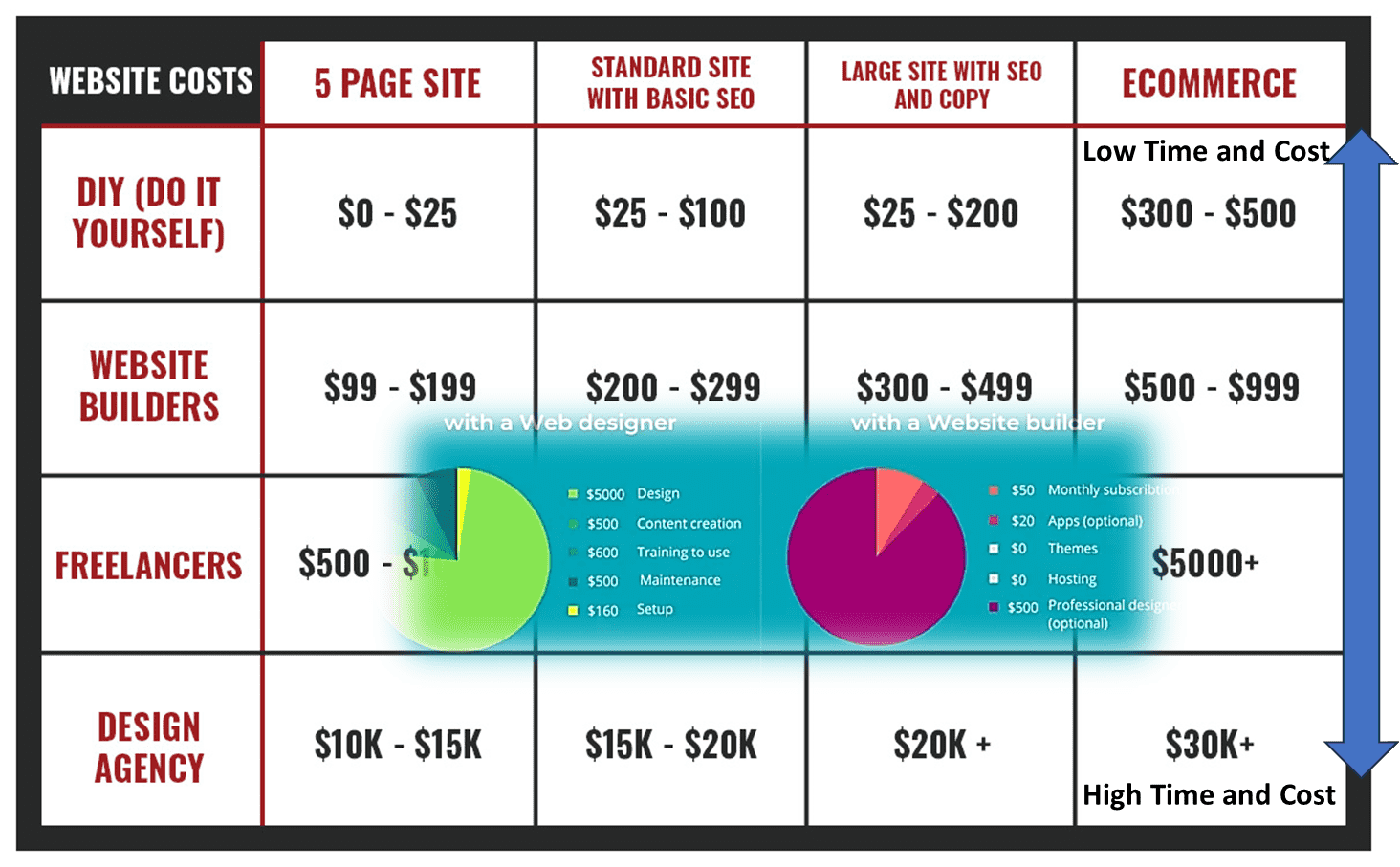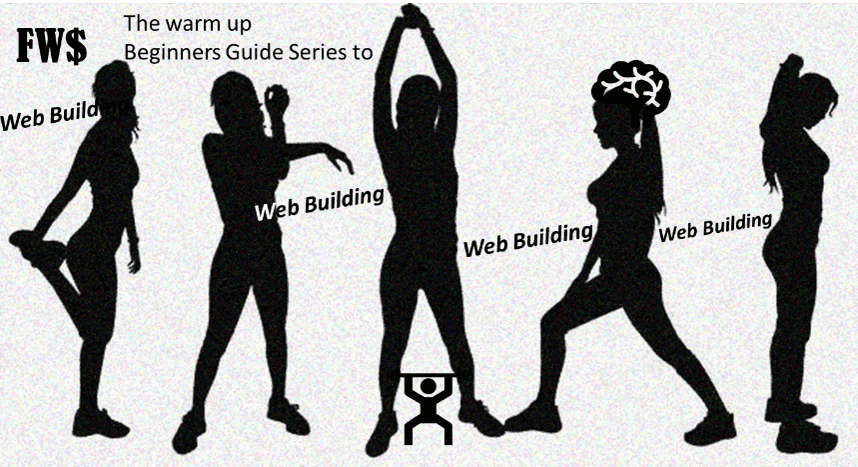Why You Need to Do a Pre-Launch Trial of Your MVP: A Comedic Guide to Not Flying Blind
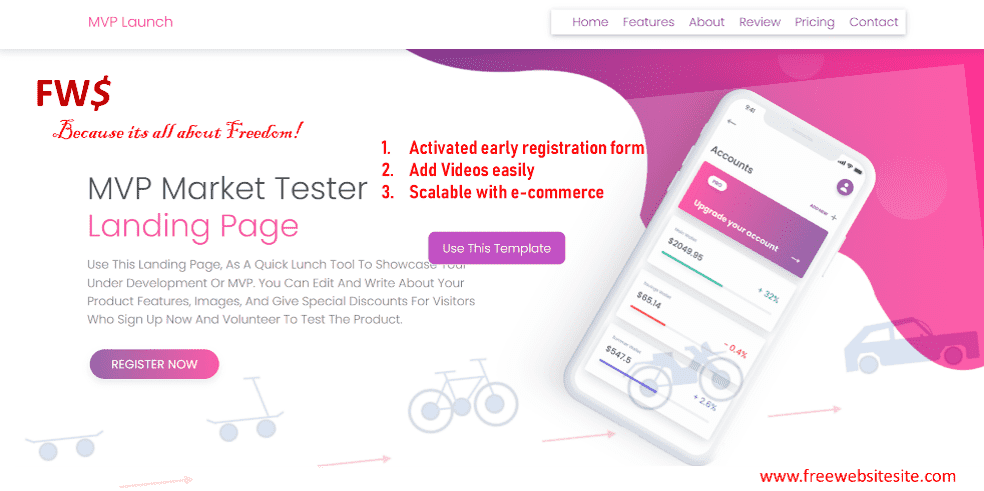
Title: Why You Need to Do a Pre-Launch Trial of Your MVP: A Comedic Guide to Not Flying Blind
So, you've got a brilliant idea for a new product or service that’s going to change the world—or at least get you out of your day job. Your Minimum Viable Product (MVP) is ready, your team is pumped, and you're thinking, “Why wait? Let’s launch this baby!” But hold on a second, you ambitious entrepreneur—you might be missing a crucial step. Before you leap into the unknown with your MVP, have you thought about doing a pre-launch trial using a website to gather feedback from potential customers?
Sure, it might sound like an extra step, but a pre-launch trial is like testing the waters before diving headfirst into a pool—only to find out it’s empty. Let’s take a humorous look at why this step is essential, backed up with some hard statistics to show you that this isn’t just a bunch of hot air.
The MVP Pre-Launch Trial: What Is It?
Imagine you’re throwing a party. You wouldn’t just send out invitations and hope people show up, right? (Or maybe you would, but that’s a different kind of risk!) Instead, you’d probably ask around first, gauge interest, maybe even test a playlist or two. The same logic applies to launching an MVP. A pre-launch trial means setting up a website where you can share your MVP with potential customers, gather feedback, test your marketing, and tweak your offering before going full throttle.
Why Bother with a Pre-Launch Trial? The Importance of Not Flying Blind
Avoid the Awkward Silence: Gathering Customer Feedback Think of your MVP as your first date with customers. You wouldn’t want to talk about yourself for an hour without gauging their interest, right? (Unless youre really into awkward silences.) A pre-launch trial helps you get real feedback. According to a survey by CB Insights, 42% of startups fail because there’s no market need for their product. Yep, 42%! Imagine spending months—or even years—developing something only to find out nobody wants it.
Test the Market: Are They Even Into You? Let’s be real—just because you think your idea is groundbreaking doesn’t mean the market does. Testing the waters can help you see if people are actually willing to use (or even pay for) your MVP. According to Startup Genome, startups that pivot early based on market feedback have a 3.6 times higher growth rate than those that don’t. So, it’s better to know upfront if people are into you or if it’s time to try a new approach.
The Power of Iteration: Perfect Is the Enemy of Done Doing a pre-launch trial gives you the chance to make iterations based on real data, not just your gut feeling. Studies show that startups that iterate and adapt their products based on customer feedback are 7 times more likely to raise money and grow their user base. That’s right—7 times! So why gamble on your first draft when you can refine, adjust, and make your MVP irresistible?
Building the Buzz: Creating a Pre-Launch Hype Train Think of the pre-launch trial as your chance to build buzz. According to research by Harvard Business Review, products that build up anticipation with pre-launch trials or sneak peeks generate 40% more initial interest and traction than those that dont. It’s like dropping hints about your amazing new product and watching people flock to your website to see what the fuss is about. (And hey, you’re using FreeWebsiteSite.com, so you’re not even breaking the bank in the process!)
Mitigating the Risk: Better Safe than Sorry Let’s face it, launching a product is risky business. Why not minimize that risk with a pre-launch trial? Data from CB Insights shows that 29% of startups fail due to running out of cash. Wouldn’t you rather know early on if your idea is a money pit? A pre-launch trial can help you see if there’s enough interest to justify further investment, so you don’t end up selling your kidney to fund your dream.
Statistical Data: Pre-Launch Trials Aren’t Just a Fad
Still not convinced? Here are some more numbers that might change your mind:
- A/B Testing Increases Conversion Rates by 49%: According to a survey by ConversionXL, companies that regularly conduct A/B tests and experiments see a 49% higher conversion rate than those that don’t. A pre-launch trial website is the perfect place to test different versions of your MVP, marketing copy, or pricing models.
- Pre-Launch Marketing Increases Sales by 300%: According to a study by Neil Patel, businesses that engage in pre-launch marketing (like using a trial website) experience up to 300% more sales than those that wait until launch day to start promoting. That’s a huge difference for a tiny bit of effort!
- 72% of Successful Entrepreneurs Started with an MVP Trial: Data from the Lean Startup methodology shows that 72% of successful entrepreneurs started with a basic MVP trial to test the market before fully launching. Thats basically the majority—are you sure you want to go against the grain?
How to Conduct a Pre-Launch Trial Using a Website: The Fun (and Easy) Way
Now that you know why you should conduct a pre-launch trial, let’s talk about how. Don’t worry—it doesn’t have to be complicated or expensive. With platforms like FreeWebsiteSite.com, you can set up a pre-launch trial page in minutes. Here’s how:
- Create a Landing Page: Start with a simple landing page that explains what your MVP does, who it’s for, and why it’s awesome. Keep it light, fun, and engaging. Use humor if that’s your brand’s style—people love a good laugh!
- Offer an Incentive: Everyone loves free stuff. Offer early adopters a discount, free trial, or exclusive access in exchange for their feedback. This not only generates interest but also gives you valuable insights.
- Collect Feedback: Use surveys, forms, or simple feedback buttons to gather input from visitors. Ask them what they liked, what they didn’t, and what they’d change.
- Test, Iterate, Repeat: Use the feedback to make improvements, and then test again. Think of it as a dance—you’re not going to get it right on the first try, but with each step, you’re getting closer to the perfect rhythm.
- Build Anticipation: Use social media, email marketing, and even good old word of mouth to build anticipation around your launch. Share sneak peeks, behind-the-scenes content, or countdowns to keep people excited.
Why Use FreeWebsiteSite.com for Your Pre-Launch Trial?
If you’re a startup on a budget (and who isn’t?), you don’t want to spend thousands on a fancy website for your pre-launch trial. That’s where FreeWebsiteSite.com comes in. With their easy-to-use platform, you can build a fully customizable website, complete with video integration, e-commerce capabilities, and all the bells and whistles, for just $35 per year.
And let’s be honest—at that price, you’ve got nothing to lose except a whole lot of “what-ifs.”
Final Thoughts: Don’t Skip the MVP Pre-Launch Trial!
Launching an MVP without a pre-launch trial is like proposing on the first date—bold, brave, and most likely, a bit premature. Instead, take a moment to gather feedback, test the waters, and build anticipation. With a bit of humor, a few statistics, and a lot of common sense, you’ll be on your way to a successful launch in no time.
So go ahead, set up that website on FreeWebsiteSite.com, test your MVP, and watch the magic happen. And remember—the only thing worse than failing is never trying at all. Happy pre-launching!
Related Templates
Here are some examples worth reading on before you completely make up your mind in setting up the MVP site using FW$ after all, does this horse know the direction its taking the rider to? Lets study why does Freewebsitesite.com is not just all talk, its researched based, the ideal web publishing success partner you need to set your digital image on the right trajectory.
Launching a startup is like venturing into the wild blue yonder — youve got a map (your business plan), a compass (your MVP vision), and a lot of enthusiasm, and a pocket full of change. But just like in the wilderness or high seas, things can go very wrong, very fast. Fortunately, some of today’s billion-dollar companies found their way to the top by using a strategy that saved them from long, painful pre-sale hibernation: Introducing Minimum Viable Product (MVP) testing.
Believe it or not, even giants like Airbnb, Dropbox, and Zappos started out by testing their MVPs. So, buckle up as we dive into how these enterprises avoided a long, snooze-inducing pre-sale period, infused with some good ol’ humor and fascinating statistics!
1. Airbnb: The $100 Billion Couch Surfing Success Story
Airbnb, now valued at over $100 billion, began with a rather peculiar MVP. The founders, Brian Chesky and Joe Gebbia, needed to make some extra cash to pay rent. So, they did what any resourceful millennial would do—they put an air mattress in their living room and offered breakfast to strangers. Hence, “Air Bed & Breakfast” was born. Not exactly a catchy name, but hey, it was a start.
Their MVP was simple: a basic website that advertised their air mattress idea. The goal? To see if people were actually willing to pay to sleep in someone else’s living room. They even tested their MVP by reaching out to potential customers (who were attending a design conference in San Francisco) and convinced three brave souls to spend the night.
The Humor: Imagine being one of the first three customers. You’re at a conference, and instead of the usual hotel comfort, you’re handed an air mattress in a stranger’s apartment with the promise of breakfast. Bold move, right? But it worked!
The Statistics: This MVP approach saved Airbnb from the horrors of a long pre-sale hibernation. Within a year, they went from 3 customers to 10,000 listings worldwide. Today, they have over 4 million hosts and 150 million users globally.
Key Takeaway: By testing a simple, low-cost MVP, Airbnb validated their idea and gathered valuable customer feedback early on. Had they waited to build a fully-featured website or secure investments, they might still be hibernating in a very different way.
2. Dropbox: The Explainer Video That Sold Thin Air
Dropbox, valued at over $10 billion today, took MVP testing to a whole new level. Back in 2007, instead of spending months developing a product nobody knew they needed, Dropbox’s founder, Drew Houston, created a simple three-minute explainer video. The video humorously described the problems with existing file storage methods and demonstrated Dropbox’s potential solution.
The kicker? The product didn’t even exist yet! The team only had a prototype, but the video helped potential customers visualize how Dropbox would work. Drew Houston’s decision to explain a non-existent product in a way that made sense to everyone was pure genius.
The Humor: Imagine going on Shark Tank and pitching, “Hey, I’ve got this amazing product! Can I show you a video of how it could work?” You’d probably get laughed off stage. But that’s exactly what Dropbox did—and it worked!
The Statistics: After launching the video, Dropbox’s waiting list grew overnight from 5,000 to 75,000 users. Without spending a fortune on product development, they built a user base and validated their idea using nothing more than a video.
Key Takeaway: MVP testing can be as simple as a video that captures the essence of your product. It can save you from investing years of effort into building something that people might not even want.
3. Zappos: Shoes, Sweat, and… Satisfaction Guaranteed?
Before Zappos became a billion-dollar online shoe retailer (later acquired by Amazon), its founder Nick Swinmurn faced a dilemma. Would people really buy shoes online without trying them on first? Instead of building a massive inventory or fancy website, Swinmurn decided to test his MVP by doing something hilariously simple.
He went to local shoe stores, took photos of shoes, and posted them on his rudimentary website. When people placed an order, he’d go back to the store, buy the shoes, and ship them to the customer. No inventory, no warehouses—just good old-fashioned hustle.
The Humor: Imagine being in the store and seeing a guy taking random photos of shoes, then running back and forth like he’s training for a marathon. If anyone asked, “What are you doing?” his answer would probably be, “Testing my MVP!”
The Statistics: This MVP strategy allowed Zappos to test whether people would actually buy shoes online. It worked. Zappos rapidly grew, proving there was demand for their service. Eventually, the company was acquired by Amazon for $1.2 billion.
Key Takeaway: Sometimes, the simplest MVP test—like just selling a product directly from a store—can save you from spending years developing an online platform nobody wants. Start small, validate, and then scale!
4. Buffer: A Blog Post That Made Social Media Scheduling Sexy
Buffer, the popular social media scheduling tool, now serves millions of users worldwide. But back in 2010, its founder, Joel Gascoigne, took a lean approach to MVP testing. Instead of building a complex tool, he created a two-page website.
The first page explained what Buffer would do (scheduling social media posts). When visitors clicked to sign up, they were taken to the second page, which said, “We’re not ready yet—leave your email to be notified.” This allowed Buffer to gauge interest before investing in development.
The Humor: Imagine clicking on a button to sign up for something and being met with, “Just kidding, we’re not ready!” You’d either chuckle at their audacity or feel mildly annoyed. But Buffer’s transparency paid off!
The Statistics: Buffer’s MVP test drew enough interest and sign-ups that they knew their idea had potential. Within 7 weeks of the official launch, Buffer had 100 paying customers. Fast forward to today, Buffer is a thriving company with over 75,000 customers.
Key Takeaway: MVP testing doesn’t have to be flashy. Sometimes, a basic landing page is enough to prove there’s interest, validate your concept, and get people excited about what’s coming.
5. Groupon: The Coupon King That Started with an Ugly Blog
Groupon began its journey as a modest MVP called The Point—a platform for fundraising and collective action. The idea was too vague, and the founders quickly realized they needed to pivot. So, they launched a basic WordPress blog where they posted daily deals manually.
Subscribers would receive an email about the deal of the day, and if enough people bought it, the deal would activate. If not, it expired. This bare-bones MVP allowed them to test the market without the need for a complex backend.
The Humor: Imagine receiving an email every day that feels like an invitation to a secret club. You either get a great deal, or you lose out because no one else was interested. It’s like Groupon gamified online shopping!
The Statistics: Groupon grew rapidly from this basic MVP and went public just three years later, reaching a valuation of $16.5 billion. Not bad for what started as a WordPress blog!
Key Takeaway: Don’t overcomplicate things. An MVP can be as basic as a blog or an email newsletter. Use it to validate your market, save money, and learn what your customers really want.
Final Thoughts: MVP Testing Saves More Than Just Money
There you have it—five billion-dollar examples that show MVP testing isn’t just for the little guys. It’s a strategy that can save businesses from long pre-sale hibernation, provide valuable customer feedback, and help them pivot in time before their bank accounts run dry.
So, whether you’re a startup or an aspiring unicorn, take a page from these success stories. Don’t be afraid to launch an MVP, test it in the real world, gather feedback, and iterate. Because, as these companies have shown, the path to success often starts with a simple test.
And hey, if you need a website to kickstart your MVP testing, you could always check out FreeWebsiteSite.com. After all, why spend more when you could launch like a pro for less?
